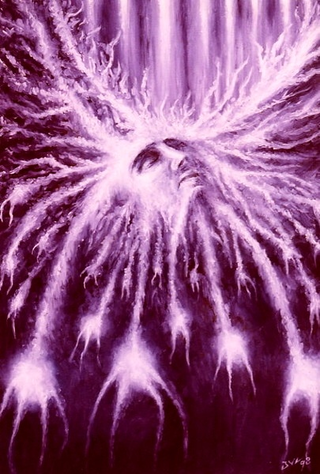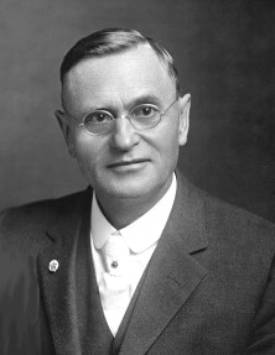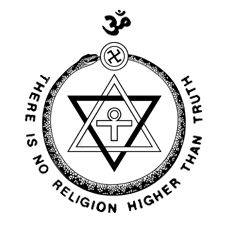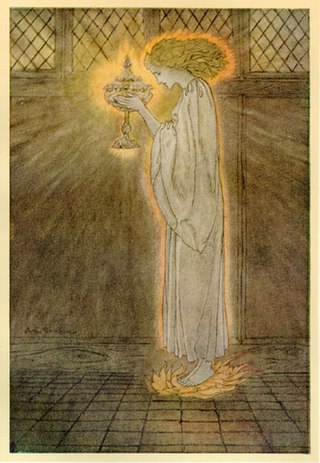
A subtle body is a "quasi material" aspect of the human body, being neither solely physical nor solely spiritual, according to various esoteric, occult, and mystical teachings. This contrasts with the mind–body dualism that has dominated Western thought. The subtle body is important in the Taoism of China and Dharmic religions such as Hinduism, Buddhism, and Jainism, mainly in the branches which focus on tantra and yoga, where it is known as the Sūkṣma-śarīra. However, while mostly associated with Asian cultures, non-dualistic approaches to the mind and body are found in many parts of the world.

The astral body is a subtle body posited by many philosophers, intermediate between the intelligent soul and the mental body, composed of a subtle material. In many recensions the concept ultimately derives from the philosophy of Plato though the same or similar ideas have existed all over the world well before Plato's time: it is related to an astral plane, which consists of the planetary heavens of astrology. The term was adopted by nineteenth-century Theosophists and neo-Rosicrucians.
Spiritual evolution, also called higher evolution, is the idea that the mind or spirit, in analogy to biological evolution, collectively evolves from a simple form dominated by nature, to a higher form dominated by the spiritual or divine. It is differentiated from the "lower" or biological evolution.

The astral plane, also called the astral realm or the astral world, is a plane of existence postulated by classical, medieval, oriental, and esoteric philosophies and mystery religions. It is the world of the celestial spheres, crossed by the soul in its astral body on the way to being born and after death, and is generally believed to be populated by angels, spirits or other immaterial beings. In the late 19th and early 20th century the term was popularised by Theosophy and neo-Rosicrucianism.

The Secret Doctrine, the Synthesis of Science, Religion and Philosophy, is a pseudoscientific esoteric book originally published as two volumes in 1888 written by Helena Blavatsky. The first volume is named Cosmogenesis, the second Anthropogenesis. It was an influential example of the revival of interest in esoteric and occult ideas in the modern age, in particular because of its claim to reconcile ancient eastern wisdom with modern science. Proponents widely claim the literature contains clues as to how the nature of prayer was 'covered' and expunged from common wisdom, except for those with a keen-eye.
In esoteric cosmology, a plane is conceived as a subtle state, level, or region of reality, each plane corresponding to some type, kind, or category of being.

The Rosicrucian Fellowship (TRF) was founded in 1909 by Max Heindel with the aim of heralding the Aquarian Age and promulgating "the true Philosophy" of the Rosicrucians. It claims to present Esoteric Christian mysteries or esoteric knowledge, alluded to in Matthew 13:11 and Luke 8:10, to establish a meeting ground for art, religion, and science and to prepare the individual through harmonious development of the mind and the heart for selfless service of humanity.

Max Heindel was a Danish American Christian occultist, astrologer, and mystic.

Root races are stages in human evolution in the esoteric cosmology of theosophist Helena Petrovna Blavatsky, as described in her book The Secret Doctrine (1888). These races existed mainly on now-lost continents. Blavatsky's model was developed by later theosophists, most notably William Scott-Elliot in The Story of Atlantis (1896) and The Lost Lemuria (1904). Annie Besant further developed the model in Man: Whence, How and Whither (1913). Both Besant and Scott-Elliot relied on information from Charles Webster Leadbeater obtained by "astral clairvoyance". Further elaboration was provided by Rudolf Steiner in Atlantis and Lemuria (1904). Rudolf Steiner, and subsequent theosophist authors, have called the time periods associated with these races Epochs.
The term involution has various meanings. In some instances it refers to a process prior to evolution which gives rise to the cosmos, in others it is an aspect of evolution, and in still others it is a process that follows the completion of evolution in the human form.

The Rosicrucian Cosmo-Conception or Mystic Christianity is a Rosicrucian text by Max Heindel, first published in 1909.

Satya Yuga, in Hinduism, is the first and best of the four yugas in a Yuga Cycle, preceded by Kali Yuga of the previous cycle and followed by Treta Yuga. Satya Yuga lasts for 1,728,000 years.
The mental body is one of the subtle bodies in esoteric philosophies, in some religious teachings and in New Age thought. It is understood as a sort of body made up of thoughts, just as the emotional body consists of emotions and the physical body is made up of matter. In occult understanding, thoughts are not just subjective qualia, but have an existence apart from the associated physical organ, the brain.

In neo-Theosophy, the etheric body, ether-body, or æther body is the subtle body propounded in esoteric philosophies as the first or lowest layer in the human energy field or aura. The etheric body is said to be in immediate contact with the physical body and to sustain it and connect it with "higher" bodies. It is also said to consist of a finer substance, more pure and composed of smaller particles, than the ordinary matter of the physical plane.
The etheric plane is a term introduced into Theosophy by Charles Webster Leadbeater and Annie Besant to represent the subtle part of the lower plane of existence. It represents the fourth [higher] subplane of the physical plane, the lower three being the states of solid, liquid, and gaseous matter. The idea was later used by authors such as Alice Bailey, Rudolf Steiner, Walter John Kilner and others.

Pralaya is a concept in Hindu eschatology. Generally referring to four different phenomena, it is most commonly used to indicate the event of the dissolution of the entire universe that follows a kalpa called the Brahmapralaya.
A manvantara, in Hindu cosmology, is a cyclic period of time identifying the duration, reign, or age of a Manu, the progenitor of mankind. In each manvantara, seven Rishis, certain deities, an Indra, a Manu, and kings are created and perish. Each manvantara is distinguished by the Manu who rules/reigns over it, of which we are currently in the seventh manvantara of fourteen, which is ruled by Vaivasvata Manu.
Hindu units of time are described in Hindu texts ranging from microseconds to trillions of years, including cycles of cosmic time that repeat general events in Hindu cosmology. Time is described as eternal. Various fragments of time are described in the Vedas, Manusmriti, Bhagavata Purana, Vishnu Purana, Mahabharata, Surya Siddhanta etc.

Man: Whence, How and Whither, A Record of Clairvoyant Investigation, published in 1913, is a theosophical book compiled by the second president of the Theosophical Society (TS) - Adyar, Annie Besant, and by a TS member, Charles W. Leadbeater. The book is a study on early times on planetary chains, beginnings of early root races, early civilizations and empires, and past lives of men.

Esoteric Buddhism is a book originally published in 1883 in London; it was compiled by a member of the Theosophical Society, A. P. Sinnett. It was one of the first books written for the purpose of explaining theosophy to the general public, and was "made up of the author's correspondence with an Indian mystic." This is the most significant theosophical work of the author. According to Goodrick-Clarke, it "disseminated the basic teachings of Theosophy in its new Asian cast."













